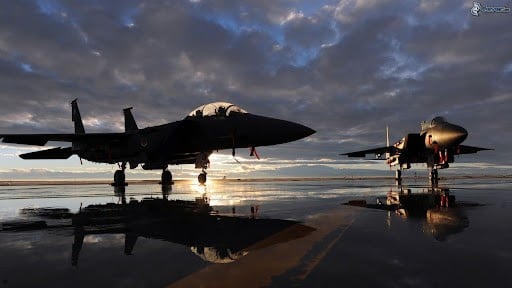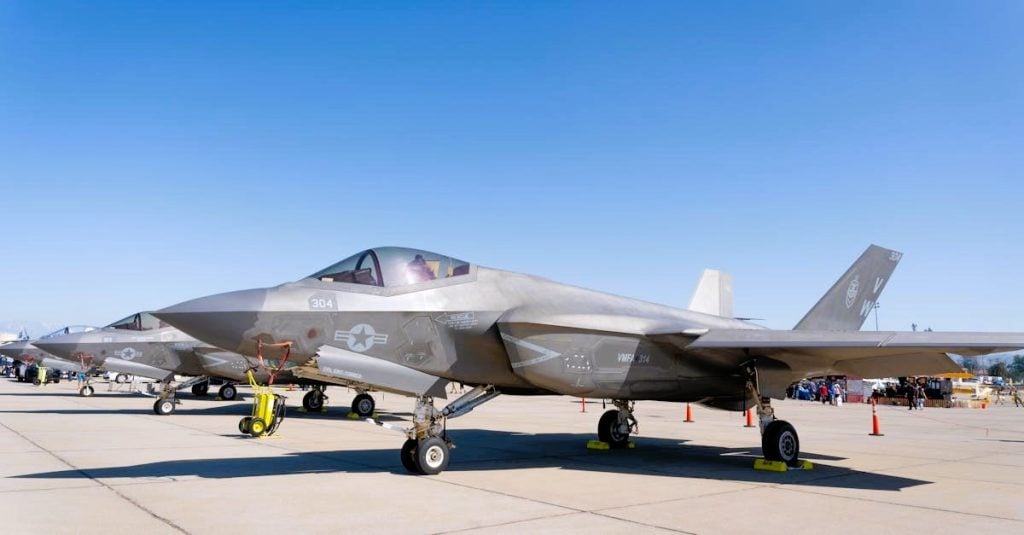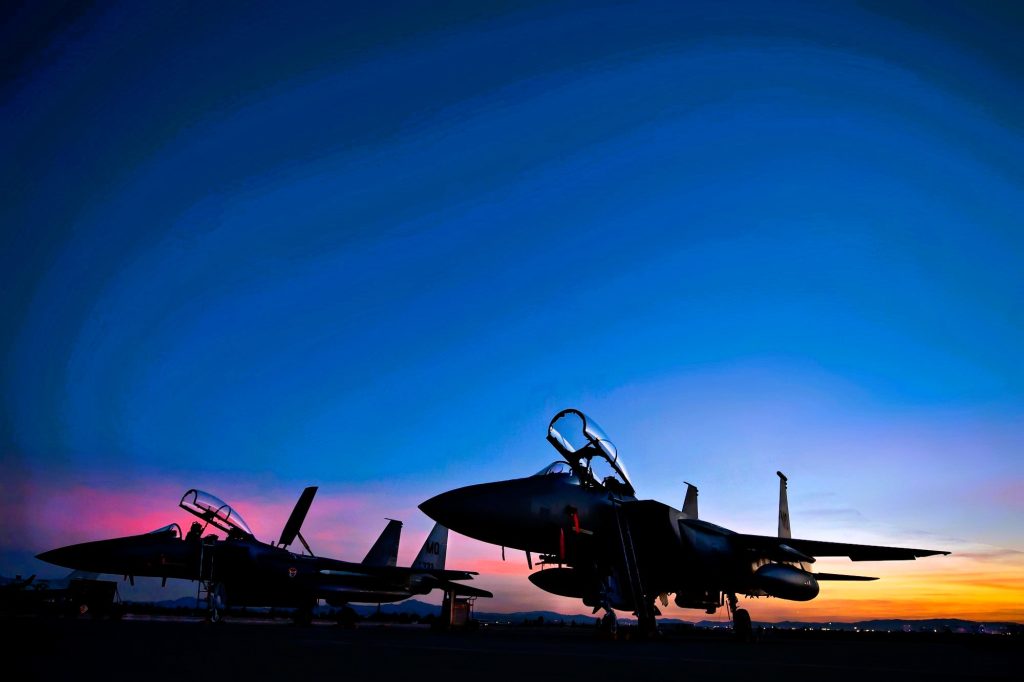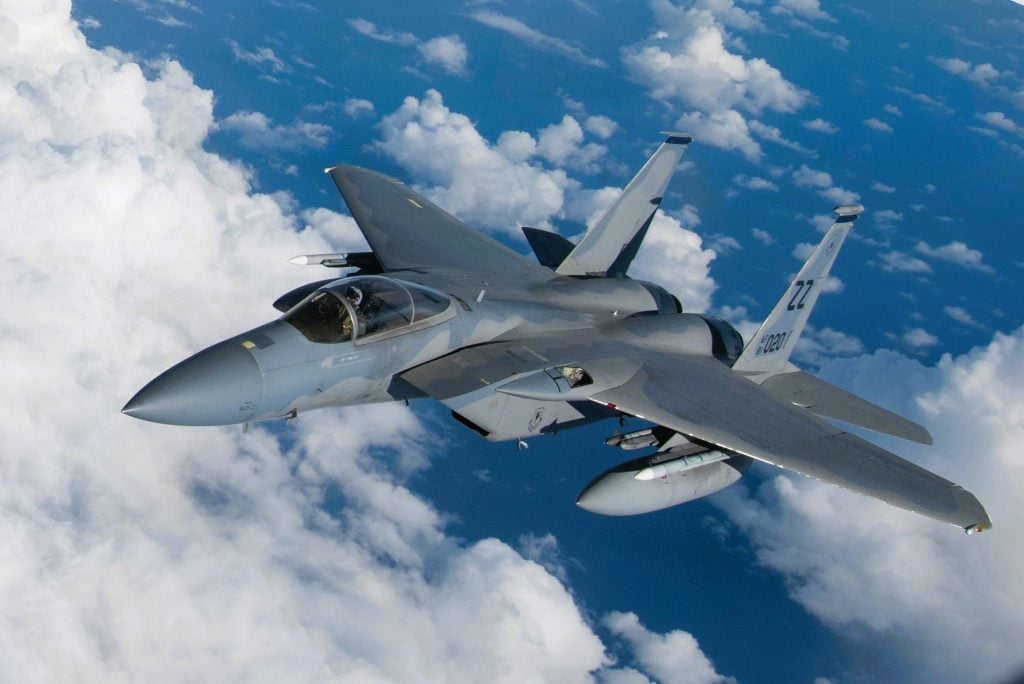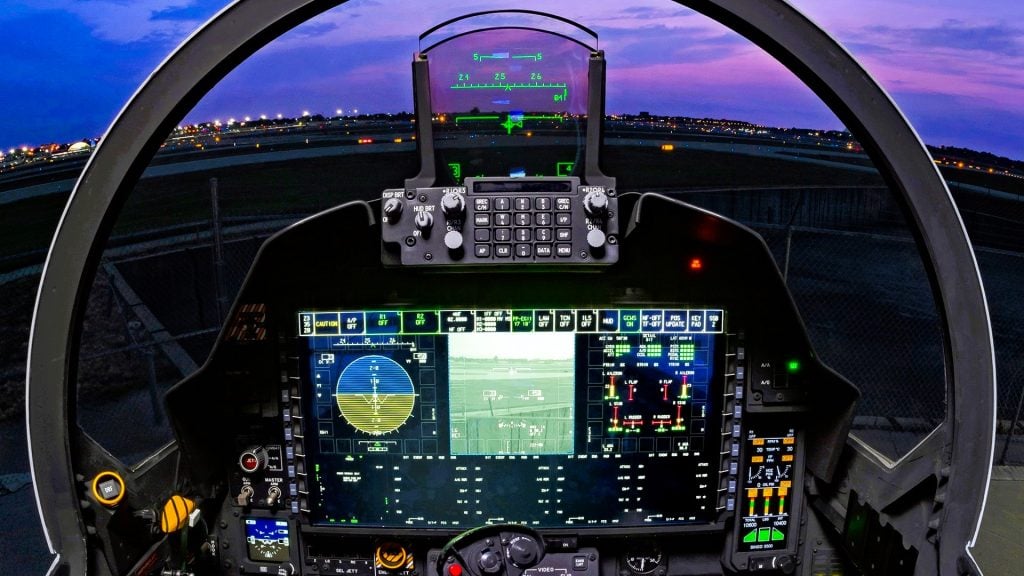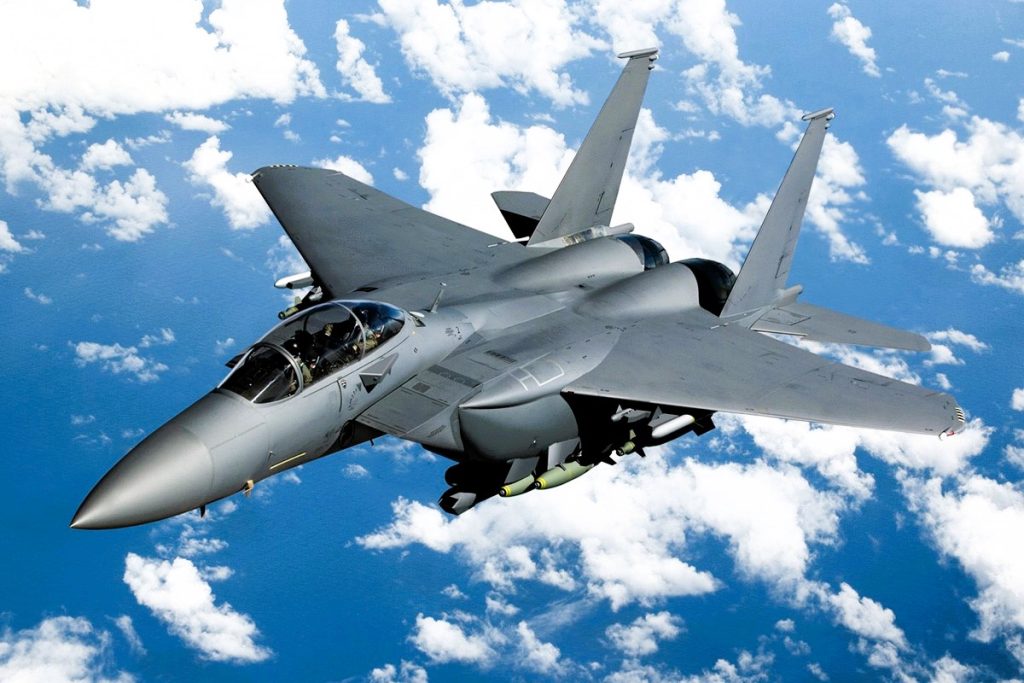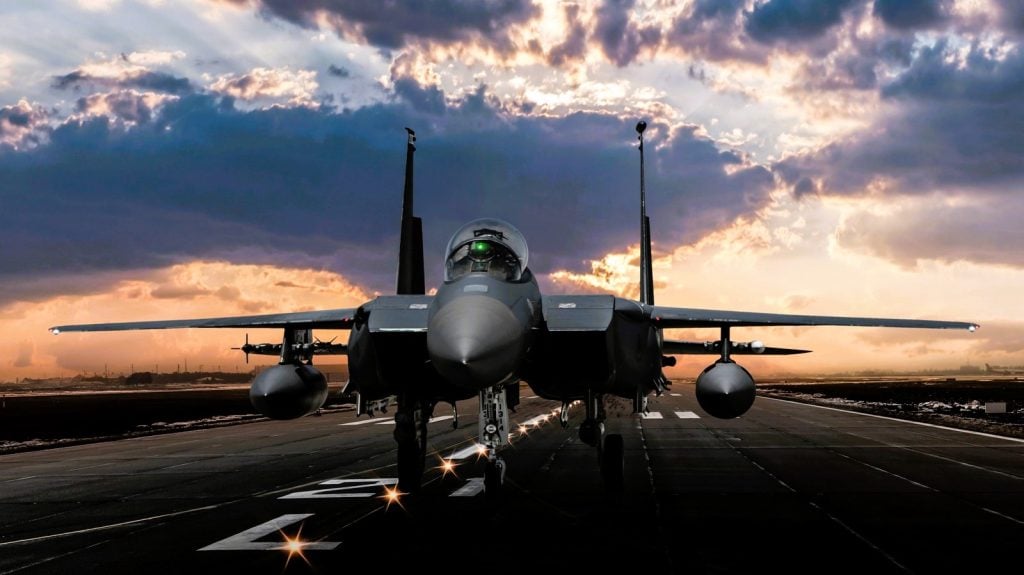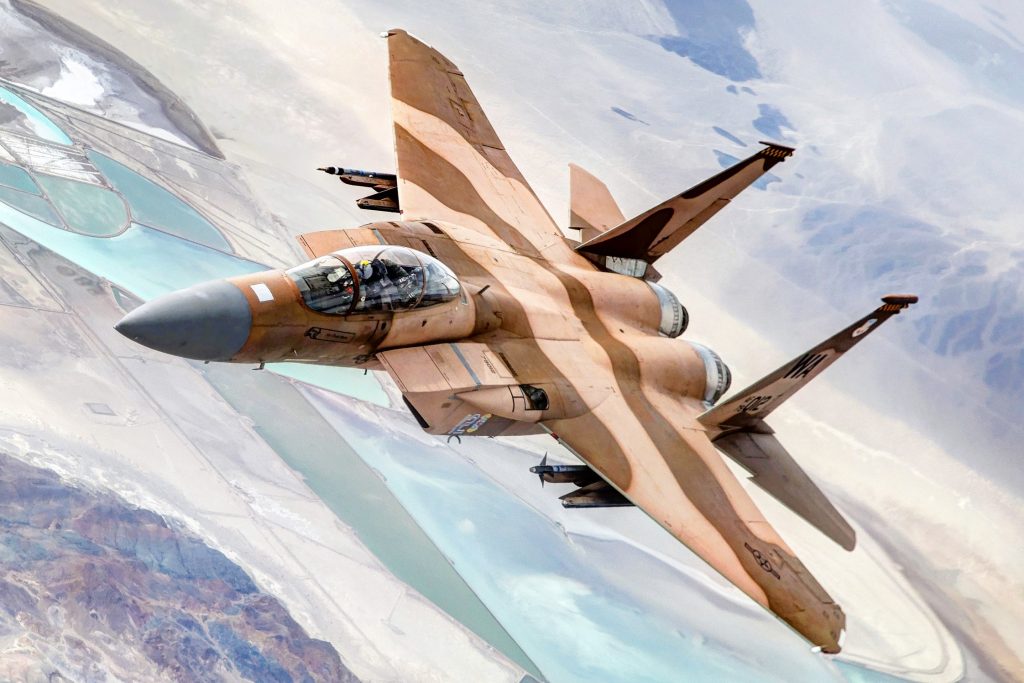In the ever-evolving landscape of military aviation, the Boeing F-15EX Eagle II has emerged as a formidable contender, poised to redefine the capabilities of air superiority fighters. As an upgraded version of the legendary F-15E Strike Eagle, this aircraft brings a wealth of enhancements and technological advancements to the table, making it a crucial asset for homeland defense and air combat operations.
Developed in response to the changing geopolitical landscape and the shifting priorities of the United States Air Force (USAF), the F-15EX represents a strategic investment in maintaining air dominance in the face of emerging threats. Despite not possessing the stealth characteristics of its 5th-generation counterparts, the F-15EX boasts a formidable array of capabilities that make it a valuable addition to the USAF’s arsenal.
In this comprehensive article, we will delve into the intricate details of the Boeing F-15EX Eagle II, exploring its design, performance, and the pivotal role it is set to play in the future of aerial warfare. From its advanced avionics and weapon systems to its impressive speed and payload capacity, we will uncover the key features that make this aircraft a game-changer in the world of military aviation.
The Enduring Legacy of the F-15 Eagle
The Boeing F-15EX Eagle II is the latest iteration of the renowned F-15 Eagle, a storied aircraft that has been a cornerstone of the USAF’s air superiority arsenal for decades. Tracing its roots back to the Cold War era, the F-15 was developed in the late 1960s to counter the threat posed by the Soviet Union’s Mikoyan-Gurevich MiG-25 interceptor.
The original F-15 design, known as the F-15A, entered service in 1976 and quickly established itself as a formidable air-to-air combat platform. Over the years, the F-15 has undergone numerous upgrades and variants, including the F-15E Strike Eagle, which introduced air-to-ground capabilities to the platform.
As the USAF began to shift its focus towards the development of 5th-generation fighters like the F-22 Raptor and the F-35 Lightning II, the need for a more advanced version of the F-15 became increasingly apparent. This led to the birth of the F-15EX, a comprehensive upgrade that would leverage the proven capabilities of the F-15 while incorporating cutting-edge technologies to ensure its continued relevance in the modern battlefield.
The Emergence of the F-15EX
The decision to develop the F-15EX was driven by a combination of factors, including the USAF’s desire to maintain a robust air superiority fleet and the challenges faced in procuring sufficient numbers of the F-22 Raptor and the F-35 Lightning II.
The F-22 Raptor, initially envisioned as the USAF’s premier air superiority fighter, faced production challenges and budgetary constraints, resulting in a significantly smaller fleet than originally planned. Similarly, the F-35 Lightning II, a multi-role 5th-generation fighter, experienced development delays and cost overruns, further complicating the USAF’s plans to transition its fighter force.
In this context, the F-15EX emerged as a pragmatic solution, offering a cost-effective and technologically advanced alternative to the aging F-15C/D models. The USAF’s decision to opt for the two-seat F-15EX variant was a strategic move, as it allowed the service to leverage the existing F-15D production line, avoiding the costly process of establishing a new production line.
Technological Advancements of the F-15EX
The Boeing F-15EX Eagle II represents a significant leap forward in terms of technological advancements compared to its predecessors. While it may not be classified as a true 5th-generation fighter like the F-22 and F-35, the F-15EX can be considered a 4.5-generation aircraft, boasting a host of cutting-edge features that enhance its capabilities.
Advanced Avionics and Sensors
At the heart of the F-15EX’s technological prowess is its advanced avionics suite, which includes an active electronically scanned array (AESA) radar, providing the aircraft with superior target detection and tracking capabilities. Additionally, the F-15EX is equipped with an Infrared Search and Track (IRST) system, which enhances the pilot’s situational awareness by detecting and tracking heat signatures, even in the presence of electronic countermeasures.
Improved Electronic Warfare Capabilities
The F-15EX also boasts enhanced electronic warfare capabilities, courtesy of the BAE Systems’ advanced Airborne Self Protection System (EPAWSS). This system provides the aircraft with advanced defensive countermeasures, including radar jamming and missile detection and avoidance, improving the pilot’s ability to survive in contested airspace.
Increased Payload and Weapon Capacity
Another key advantage of the F-15EX is its impressive payload and weapon capacity. Equipped with a Multiple Advanced Missile and Bomb Ejection Rack (AMBER), the aircraft can carry up to 22 air-to-air missiles, significantly enhancing its firepower. Additionally, the F-15EX’s revised structure and increased service life of 20,000 hours allow it to handle a wider range of oversized munitions, including hypersonic cruise missiles, further expanding its operational flexibility.
Improved Flight Controls and Cockpit
The F-15EX also features a modernized cockpit and flight control system, providing the pilot with enhanced situational awareness and improved maneuverability. These upgrades, combined with the aircraft’s proven aerodynamic design, ensure that the F-15EX remains a highly capable and responsive platform, capable of meeting the demands of modern air combat.
The Role of the F-15EX in USAF’s Operational Landscape
The integration of the Boeing F-15EX Eagle II into the USAF’s operational landscape is a strategic move that addresses the service’s evolving needs and the changing nature of air warfare.
Complementing the F-22 and F-35
While the F-15EX may not possess the stealth capabilities of the F-22 Raptor and the F-35 Lightning II, it is designed to serve as a vital complement to these 5th-generation fighters. The F-15EX’s advanced electronics and weapon systems make it an effective platform for deploying weapons in support of the stealthy F-22 and F-35, providing a formidable force multiplier in air combat operations.
Homeland Defense and Air Base Protection
One of the primary roles envisioned for the F-15EX is that of homeland defense and air base protection. Given its impressive speed, range, and payload capacity, the F-15EX is well-suited for intercepting and engaging threats to the United States’ airspace, as well as defending critical infrastructure and military installations.
Enforcement of No-Fly Zones
The F-15EX’s capabilities also make it a valuable asset for enforcing no-fly zones, particularly in areas where the enemy’s air defenses are limited. Its ability to carry a large number of air-to-air missiles and precision-guided munitions allows the F-15EX to effectively neutralize airborne threats and ground targets, ensuring the successful implementation of no-fly zone operations.
Versatility in Deployment
The F-15EX’s two-seat configuration and enhanced payload capacity also make it a versatile platform for a wide range of missions, including air-to-air combat, air-to-ground strikes, and reconnaissance. This flexibility allows the USAF to deploy the F-15EX in various scenarios, from high-intensity conflicts to peacekeeping and humanitarian operations.
The F-15EX’s Operational Capabilities
The Boeing F-15EX Eagle II is a formidable air superiority fighter that boasts impressive operational capabilities, ensuring its continued relevance in the ever-evolving landscape of aerial warfare.
Speed and Maneuverability
One of the F-15EX’s standout features is its exceptional speed and maneuverability. Capable of reaching speeds nearing Mach 2.9, the aircraft can rapidly intercept and engage airborne targets, providing the USAF with a decisive advantage in air-to-air combat. While its top speed may be slightly lower when equipped with certain weapons, the F-15EX’s agility and responsiveness remain uncompromised, allowing it to outmaneuver and outperform its adversaries.
Payload Capacity
The F-15EX’s impressive payload capacity is another key aspect of its operational capabilities. With the ability to carry up to 29,000 lbs of weapons, including oversized munitions, the aircraft can be configured for a wide range of missions, from air-to-air engagements to precision strikes against ground targets. This flexibility allows the F-15EX to adapt to evolving operational requirements, ensuring its continued relevance in the ever-changing battlefield.
Weapon Systems
The F-15EX’s weapon systems are equally impressive, with the ability to carry a diverse array of air-to-air and air-to-ground ordnance. These include advanced medium-range air-to-air missiles (AGM-120), short-range AIM-9 missiles, air-to-surface AGM-88 HARM missiles, and precision-guided GBU-39 Small Diameter Bombs. The aircraft’s multiple advanced missile and bomb ejection racks further enhance its firepower, enabling it to engage multiple targets simultaneously.
Operational Endurance
The F-15EX’s revised structure and extended service life of 20,000 hours also contribute to its impressive operational endurance. This increased lifespan allows the aircraft to undertake prolonged missions, whether in air superiority, air-to-ground, or reconnaissance roles, without the need for frequent maintenance or replacement, making it a reliable and cost-effective asset for the USAF.
Equivalent Ranks of IAS, IPS and Armed Forces Officers
The F-15EX in the Context of Modern Air Warfare
As the USAF continues to modernize its fighter fleet, the integration of the Boeing F-15EX Eagle II into its operational landscape represents a strategic decision that addresses the evolving challenges of modern air warfare.
Complementing 5th-Generation Fighters
While the F-22 Raptor and the F-35 Lightning II are undoubtedly the USAF’s premier 5th-generation fighters, the F-15EX’s role is not to replace these advanced platforms, but rather to complement them. The F-15EX’s enhanced capabilities, particularly in the areas of electronic warfare and weapons payload, make it a valuable force multiplier, supporting the stealthy operations of the F-22 and F-35 and ensuring the USAF’s continued air dominance.
Addressing Capability Gaps
The decision to procure the F-15EX is also a pragmatic response to the USAF’s capability gaps, particularly in the aftermath of the Cold War and the shifting focus towards counterinsurgency operations. The reduced defense spending and the downsizing of the active military aircraft fleet have left the USAF with a need for a cost-effective and technologically advanced platform to maintain its air superiority edge.
Maintaining Operational Flexibility
The F-15EX’s versatility and adaptability ensure that the USAF can maintain a high degree of operational flexibility in the face of evolving threats and changing mission requirements. Its ability to perform a wide range of tasks, from air defense to precision strikes, makes it a valuable asset in the USAF’s arsenal, allowing the service to respond swiftly and effectively to a variety of contingencies.
Sustaining Technological Leadership
The integration of the F-15EX also underscores the USAF’s commitment to sustaining its technological leadership in the field of military aviation. By continuously upgrading and enhancing the capabilities of the F-15 platform, the USAF demonstrates its ability to adapt and innovate, ensuring that its fighter force remains at the forefront of aerial warfare.
Conclusion
The Boeing F-15EX Eagle II represents a significant step forward in the evolution of the legendary F-15 fighter. While it may not possess the stealth characteristics of its 5th-generation counterparts, the F-15EX’s impressive array of technological advancements and operational capabilities make it a vital asset for the USAF’s air superiority mission.
As the USAF navigates the complexities of modern air warfare, the F-15EX’s role as a complement to the F-22 Raptor and the F-35 Lightning II cannot be overstated. Its advanced avionics, enhanced electronic warfare capabilities, and impressive payload capacity ensure that the USAF can maintain a decisive edge in air combat operations, whether in the context of homeland defense, air base protection, or the enforcement of no-fly zones.
The integration of the F-15EX into the USAF’s fighter fleet is a strategic investment that underscores the service’s commitment to sustaining its technological leadership and ensuring the continued dominance of American air power. As the F-15EX enters service, it promises to be a game-changer in the world of military aviation, solidifying the USAF’s position as a formidable force in the ever-evolving landscape of aerial warfare.
FAQs
1. Is the F-15EX Multirole?
The Boeing F-15EX Eagle II is a versatile American strike fighter designed for all-weather multirole operations, originating from the McDonnell Douglas F-15E Strike Eagle.
2. What is special about the F-15EX?
The F-15EX fighter jet is equipped with two F110-GE-129 engines, each producing 29,000 pounds of thrust. Capable of reaching speeds up to Mach 2.5, it holds the distinction of being the fastest fighter jet globally. Its operational range extends to 1,200 nautical miles, enabling it to effectively engage distant targets.
3. What weapons are on the F-15EX Eagle II?
Performance specifications include a top speed of Mach 2.5, an approximate range of 2,762 miles (with air refueling capability), and a ceiling of 60,000 feet. Armament consists of an internally mounted M61A1 20mm six-barrel cannon with 500 rounds, and the option to carry up to 12 AIM-9 Sidewinders or AIM-120 AMRAAMs, or a mix of up to 24 air-to-ground munitions.
4. How many F-15EX are planned?
The U.S. Air Force has announced a reduction in its planned procurement of F-15EX Eagle II jets, decreasing from 104 to 98 aircraft in alignment with its proposed Fiscal Year 2025 budget.
5. What is the purpose of the F-15 Eagle?
It possesses the capability to penetrate enemy defenses and surpass any existing enemy aircraft in combat. The F-15 is equipped with advanced electronic systems and weaponry for detecting, acquiring, tracking, and engaging enemy aircraft, whether operating in friendly or hostile airspace.
